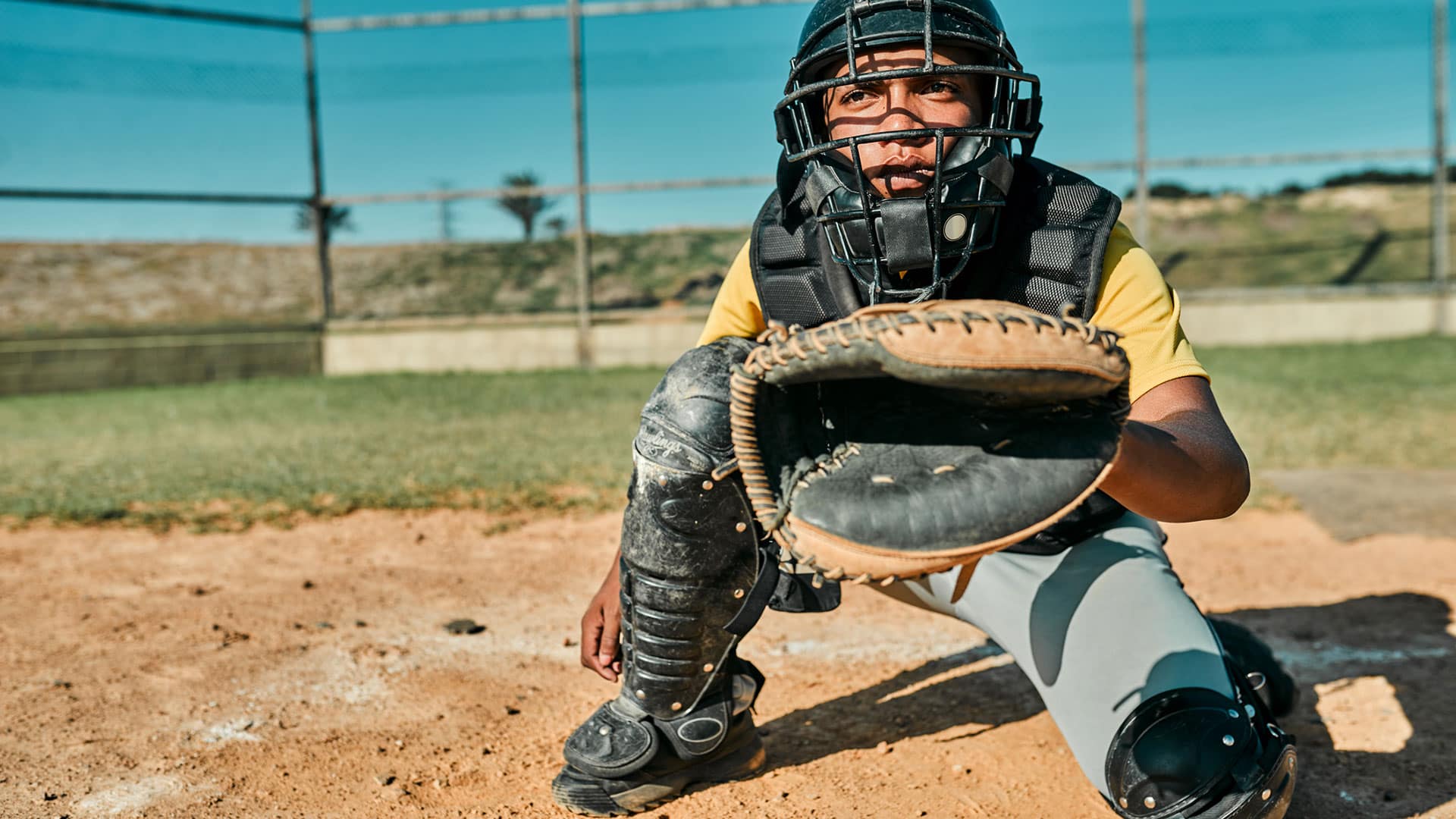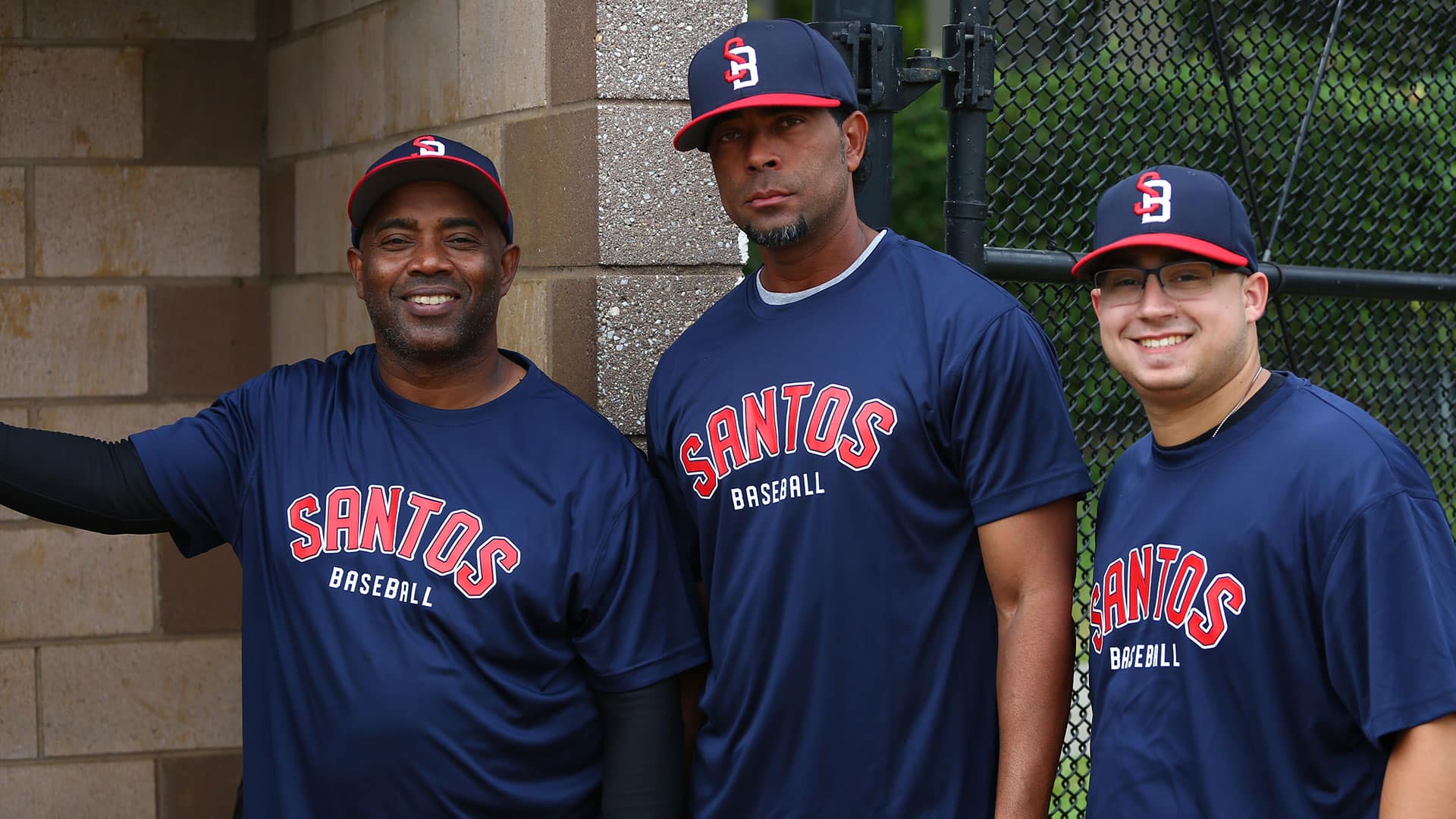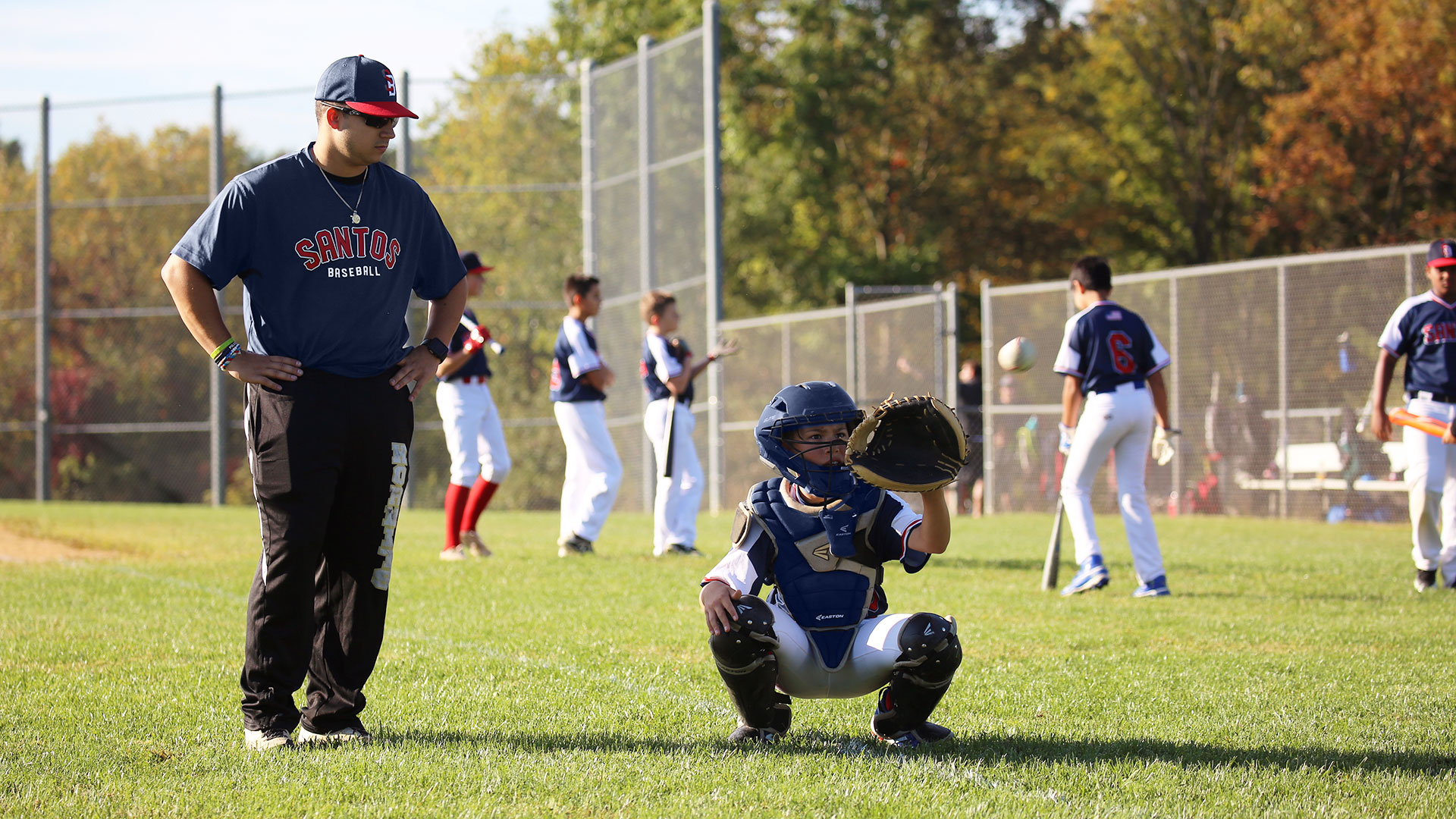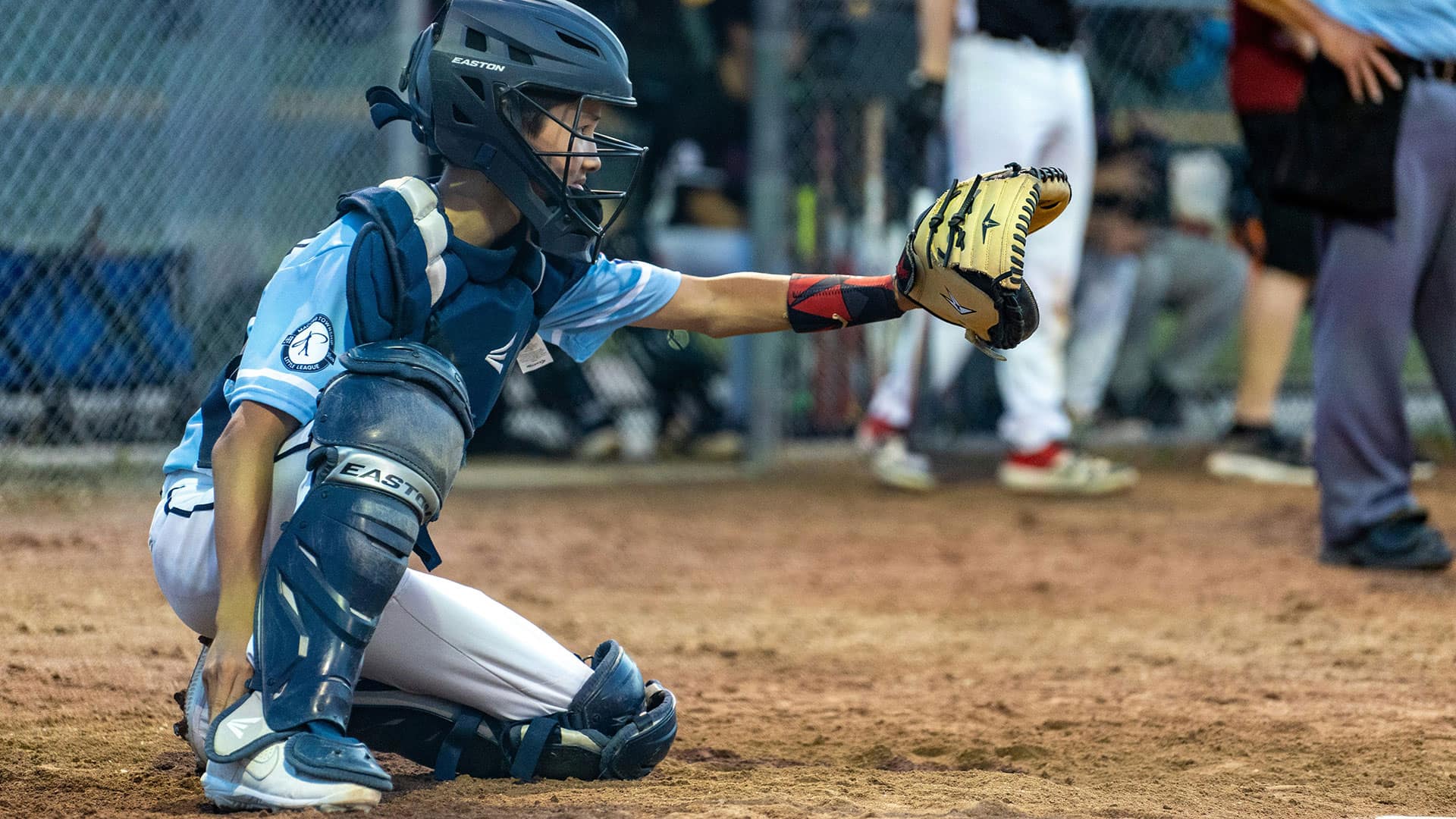Catching in baseball is a demanding position requiring much more than just catching the ball. A great catcher is the field general, the unsung hero who can significantly impact a game’s outcome. At Santos Baseball Academy in Norwood, New Jersey, we go beyond the basics to develop well-rounded catchers who excel in all aspects of the game.
This article dives into the essential skills every aspiring catcher in Norwood should master to elevate their game to the next level.
Receiving and Framing:
Receiving the ball cleanly and framing pitches effectively are crucial skills for any catcher. Good receiving involves securing the ball quietly and efficiently, even on errant throws or pitches in the dirt. Framing, on the other hand, is the art of subtly manipulating the pitch’s presentation to influence the umpire’s call.
- Quiet hands: Minimize unnecessary movement when receiving the ball. Focus on absorbing the impact and securing the ball quickly.
- Soft hands: “Give” with the pitch to reduce the impact and prevent the ball from popping out of the glove.
- Stick it: Hold the framed pitch for a moment to give the umpire a good look.
- Work the low pitch: Master the art of subtly bringing low pitches up into the strike zone.
Blocking:
A catcher’s ability to block pitches in the dirt prevents wild pitches and passed balls that can lead to runs. This skill requires quick reflexes, fearlessness, and the proper technique.
- Get low: Assume a low, athletic stance with your weight balanced.
- Stay square: Keep your body square to the pitcher to maximize your blocking surface area.
- Extend and angle: Extend your legs and angle your body towards the ball’s anticipated trajectory.
- Use your chest protector: Utilize your chest protector as a backstop to prevent the ball from getting past you.
Throwing:
Accurate and strong throws are essential for controlling the running game. Catchers need to be able to throw out baserunners attempting to steal and make quick, precise throws on pickoff attempts.
- Quick release: Develop a quick and efficient throwing motion to minimize pop time.
- Footwork: Practice proper footwork, including a quick transfer and a strong throwing step.
- Accuracy: Focus on throwing to the correct base with accuracy and velocity.
- Arm strength: Incorporate exercises to improve arm strength and throwing velocity.
Game Calling:
Calling a game effectively involves understanding the pitcher’s strengths and weaknesses, the batter’s tendencies, and the game situation. A good catcher can guide the pitcher through the game, making adjustments based on the flow of the game.
- Know your pitcher: Study your pitcher’s repertoire, including their best pitches and their struggles.
- Scouting reports: Utilize scouting reports to understand the batter’s weaknesses and tendencies.
- Game awareness: Pay attention to the game situation, including the score, the number of outs, and the runners on base.
- Mix it up: Keep the hitters off balance by calling a variety of pitches and locations.
Leadership and Communication:
Catchers are the on-field leaders of the defense. They need to be vocal, confident, and able to motivate their teammates.
- Be vocal: Communicate effectively with your pitcher, infielders, and coaches.
- Build rapport: Develop a strong rapport with your pitchers to foster trust and confidence.
- Stay positive: Maintain a positive attitude and encourage your teammates, even during challenging moments.
- Take charge: Be assertive and take control of the game from behind the plate.
Mental Toughness:
Catching is a demanding position that requires mental toughness and resilience. Catchers need to be able to handle pressure, overcome adversity, and stay focused throughout the game.
- Focus: Maintain focus on every pitch, even when the game is not going your way.
- Handle pressure: Develop the ability to perform under pressure in critical game situations.
- Bounce back: Learn from mistakes and quickly move on to the next play.
- Stay confident: Believe in your abilities and maintain a positive mindset.
At Santos Baseball Academy, we focus on developing all these essential skills in our catchers. Our experienced coaches provide personalized instruction and drills to help each player reach their full potential. We also emphasize the importance of sportsmanship, teamwork, and dedication.
FAQs:
- What age should my child start catcher training?
While younger players can begin learning basic catching skills, we generally recommend more focused catcher training around the age of 9 or 10 when they have developed better hand-eye coordination and understanding of the game.
- What equipment does my child need for catcher training?
Essential catcher’s gear includes a catcher’s mask, chest protector, leg guards, and a mitt. We also recommend a protective cup and throat guard for added safety.
- How can I help my child improve their catching skills at home?
You can help your child practice at home by playing catch, working on throwing mechanics, and using a soft toss drill to improve hand-eye coordination. You can also watch games together and discuss different catching strategies.
- How often should my child attend catcher training?
The frequency of training depends on your child’s age, skill level, and commitment. We offer various programs to accommodate different schedules and needs.
- Does Santos Baseball Academy offer specialized catcher training programs?
Yes, we offer specialized catcher training programs that focus on all the essential skills discussed in this article. Our experienced coaches provide personalized instruction and drills to help each player improve their catching abilities.
If you’re serious about taking your catching skills to the next level, contact Santos Baseball Academy in Norwood, New Jersey today. We’ll help you develop the skills and confidence you need to excel behind the plate.




